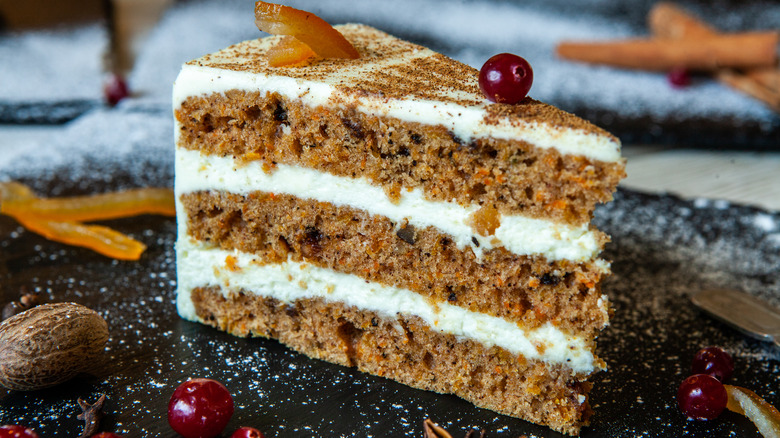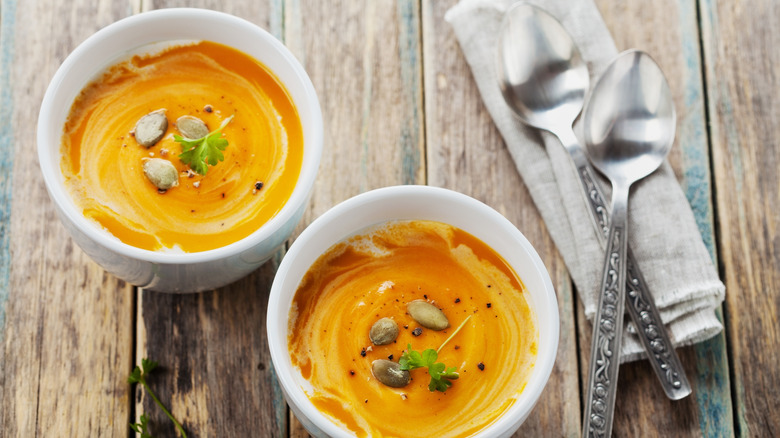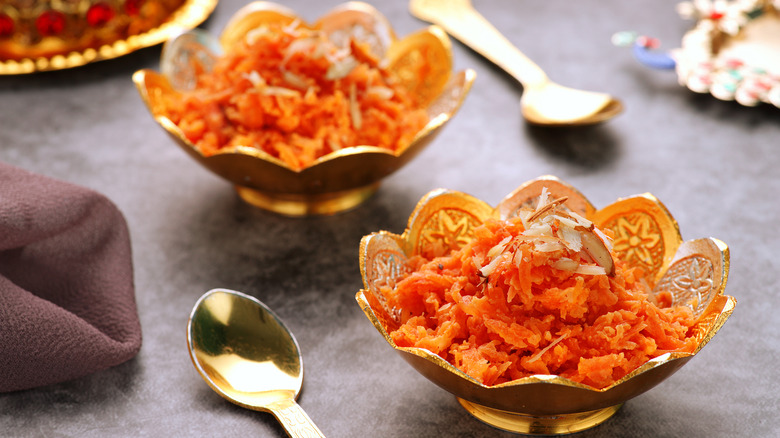The Sweet Medieval Origins Of Carrot Cake
Carrot cake is rather easy to make. After all, the recipe is almost as simple as its name suggests — carrot and cake. Of course, there are many ingredients that elevate carrot cake into the upper echelons of baking, including nuts, fruits, and inspired twists on its frosting. Considering how versatile the dish can be, it's easy to see why the dessert is so popular. Historians are not too surprised, since this dessert has been beloved for quite a while.
In the early 1900s, the United States viewed carrot cake as a rare treat — a special, foreign dish with European origins. Circa the early 1800s, carrot cake recipes appeared in the luxurious and opulent kitchens of France's high society members. During the 1700s, U.S. president George Washington included carrot cake on the menus for parties he hosted. Surprisingly, its existence dates back centuries before America's colonial time period – all the way to the Middle Ages.
Carrots may have been a sugar substitution
How did the Dark Ages produce such a bright orange dessert? When sugar became difficult to attain — whether due to supply or prices — medieval bakers turned to carrots for sweetness. Luckily, such vegetables were plentiful. (Plus, they had the added benefit of bringing moisture to dishes.) Only sugar beets could beat carrots in terms of being a sweet veggie. Carrots became a natural choice for medieval desserts — inspiring sweet carrot puddings, a precursor to today's carrot cake. Those puddings consisted of eggs, flour, and spices, plus boiled or steamed carrots.
Of course, for any historical tidbit surrounding the Dark Ages, there is some uncertainty regarding its validity. According to food historian Robert Moss, there's a phenomenon known as the "false poverty narrative," in which frugality becomes misidentified as the reason for a dish's origin. Often, those dishes were a luxury from the start (via Taste Cooking). Considering the fancy dessert that carrot cake became in Western cultures, some suspect carrot cake had always been highly prized. Either way, there's a clear connection between the sweet carrot puddings of the Middle Ages and the carrot cakes of our modern day.
How did pudding become cake?
Not a lot of people these days are eating sweet carrot pudding, and there's a reason for that. It may have suited medieval palettes, but modern tastes have changed. The popularization of ovens meant that boiling and steaming could be replaced with dry-heat baking: This allowed carrot-heavy desserts to become lighter and fattier. During the 1700s, Europeans introduced sweet carrot pudding to the New World. By the early 1900s, Americans were publishing recipe books with carrot cake included. Finally, in the 1960s, the dessert spread like wildfire and became ubiquitous stateside — due, in part, to the perceived healthiness of carrots even when mixed with unhealthy ingredients.
This isn't to say that sweet carrot pudding has disappeared entirely. In India, there's a similar carrot-based dessert, which is made using butter, caramel, dry fruit, nuts, and spices. Even in Western cuisines, there are so many different and creative carrot cake recipes that some naturally resemble their source material more than others. While the Middle Ages are over, the medieval carrot cake kingdom continues to expand across the world.


